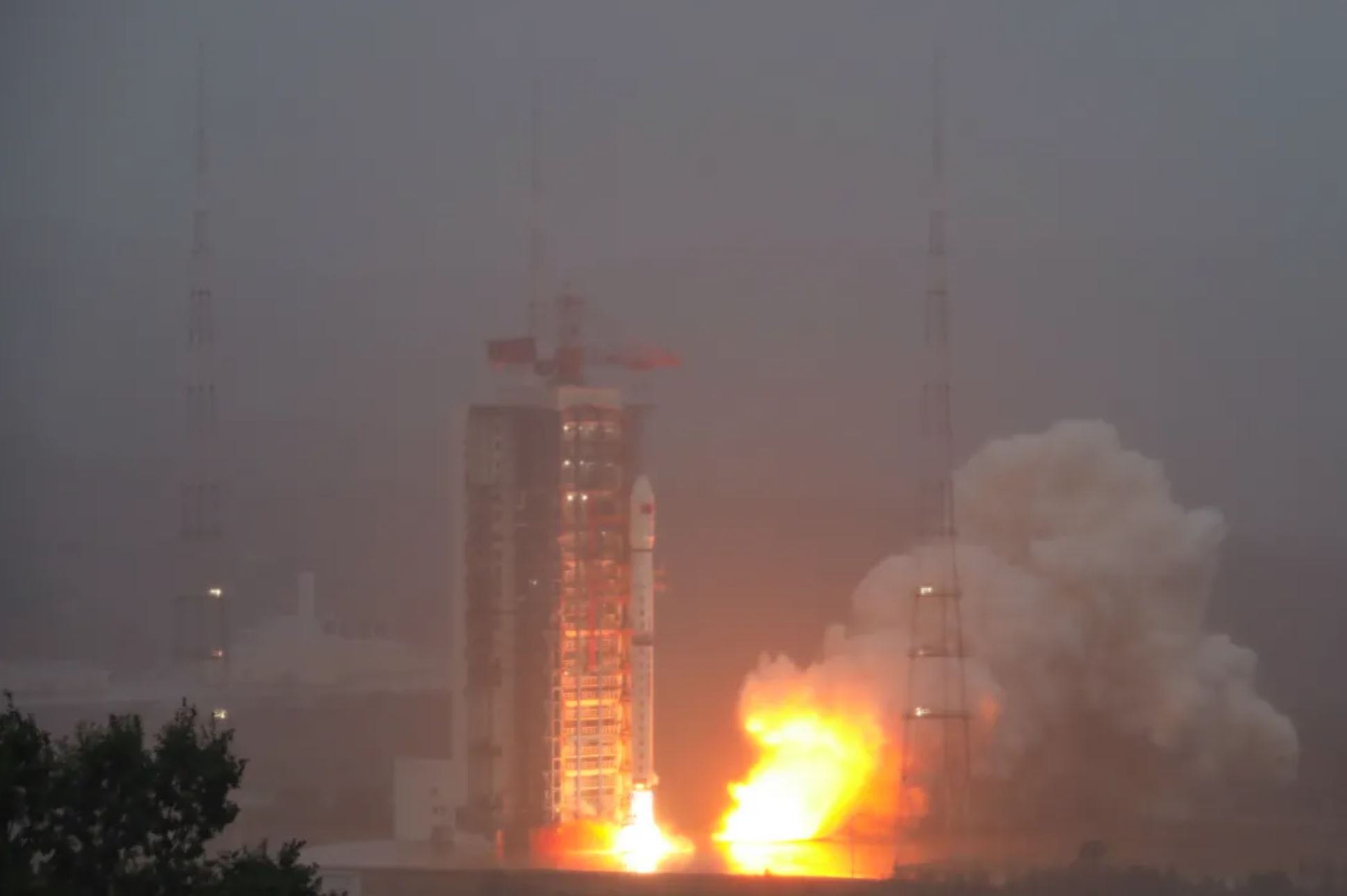China launches twin radar satellites for 3D mapping
It was China's 29th orbital launch of the year.

China conducted its 29th orbital launch of a busy year to boost the country’s remote sensing and satellite mapping capabilities.
A Long March 4B rocket lifted off from Taiyuan, north China, at 6:32 p.m. EDT August 18 (2232 GMT, 6:32 a.m. local August 18) rising into foggy skies. Insulation tiles were illuminated as they fell away from the rocket body and close to the rocket plume.
U.S. space tracking data reported that the two Tianhui-2 (02) satellites into a near-polar orbit around 318 miles (511 kilometers) above the Earth.
Related: The latest news about China's space program
Little information about the satellites was released prior to nor following launch. Chinese state media said the pair were for “scientific experiments and research, land and resources surveying, and geographic surveying and mapping.”
A paper published in the Journal of Surveying and Mapping states that the Tianhui-2 satellite system is China’s first microwave surveying and mapping satellite system.
The two satellites will orbit in formation, mapping the Earth so that their respective data can be combined to create 3D maps with a resolution of around 9.8 feet (3 meters). The paper also compares the system to the German TanDEM-X and TerraSAR-X combination launched in 2010 and 2011 respectively.
Get the Space.com Newsletter
Breaking space news, the latest updates on rocket launches, skywatching events and more!

Both the Tianhui-2 (02) satellites and the Long March 4B rocket were developed and manufactured by the Shanghai Academy of Spaceflight Technology (SAST), a major subsidiary of China’s giant state-owned main space and defense contractor, the China Aerospace Science and Technology Corporation (CASC).
A previous pair of Tianhui-2 satellites (01 group) were launched in April 2019 and were likewise described as for scientific experiments, land resource survey, geographic survey and mapping.
China also launched the Tianhui-1 (04) satellite from Jiuquan in northwest China on July 29.
The country has launched 29 times so far in 2021, with more than 40 planned for the year by China's state-owned space sector. Major missions have included the Tianhe space station module and the Shenzhou 12 crewed mission.
A new space station cargo mission, Tianzhou 3, is being prepared for launch in mid-September to provide supplies ahead of the Shenzhou 13 mission in October. Private and commercial companies are also planning their own launches.
Follow us on Twitter @Spacedotcom and on Facebook.
Join our Space Forums to keep talking space on the latest missions, night sky and more! And if you have a news tip, correction or comment, let us know at: community@space.com.

Andrew is a freelance space journalist with a focus on reporting on China's rapidly growing space sector. He began writing for Space.com in 2019 and writes for SpaceNews, IEEE Spectrum, National Geographic, Sky & Telescope, New Scientist and others. Andrew first caught the space bug when, as a youngster, he saw Voyager images of other worlds in our solar system for the first time. Away from space, Andrew enjoys trail running in the forests of Finland. You can follow him on Twitter @AJ_FI.









